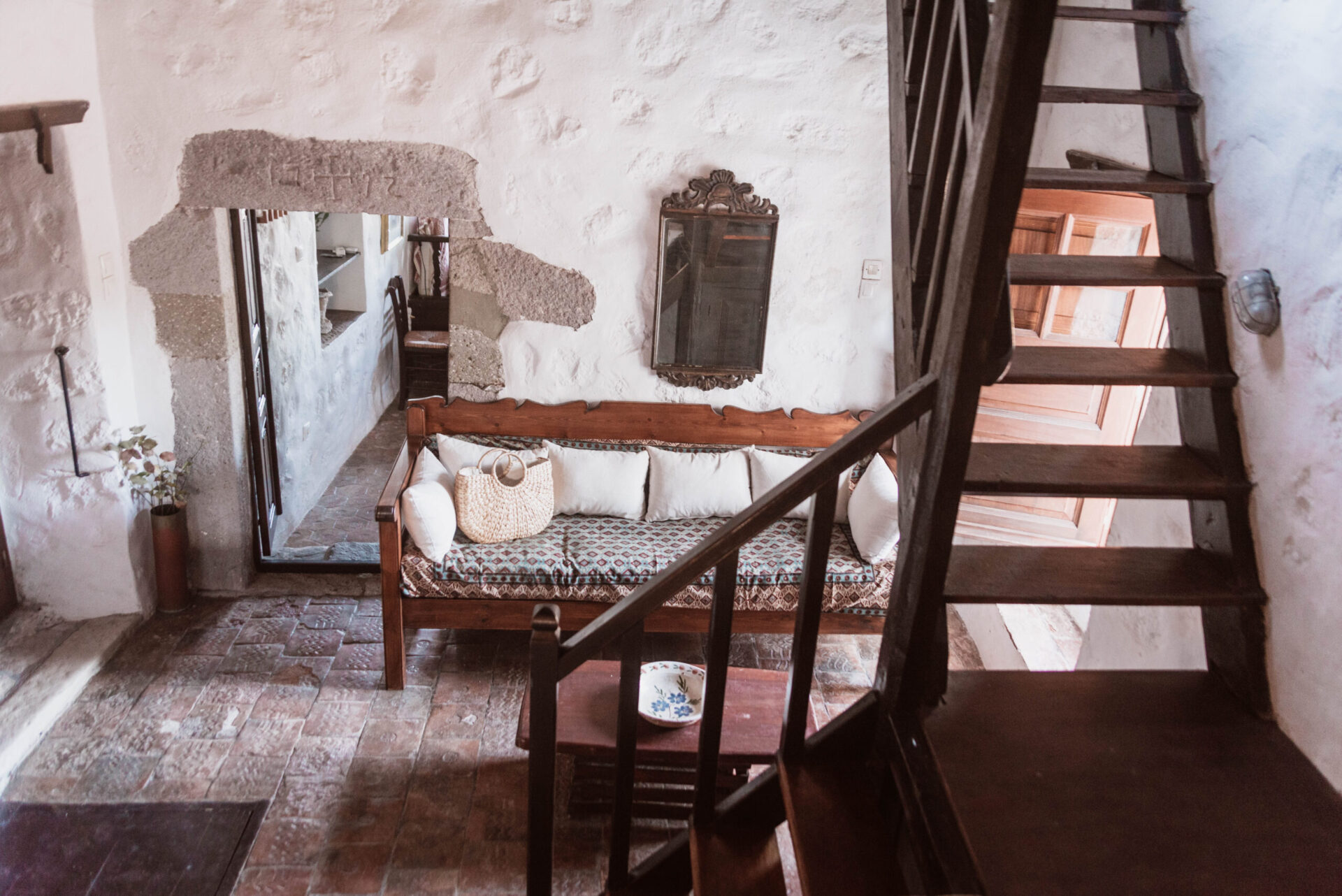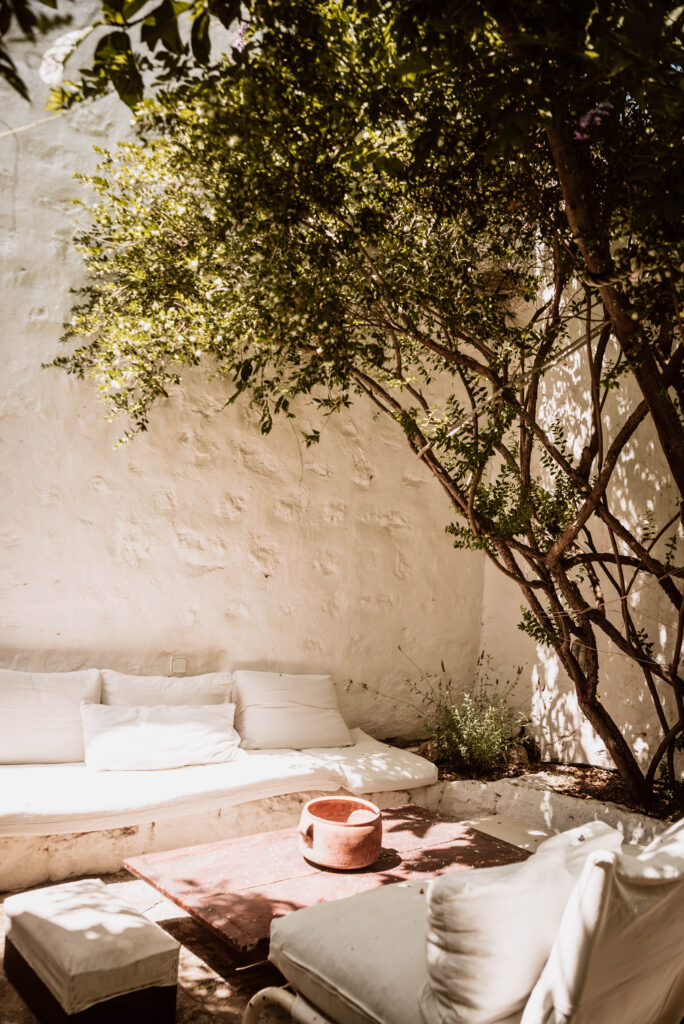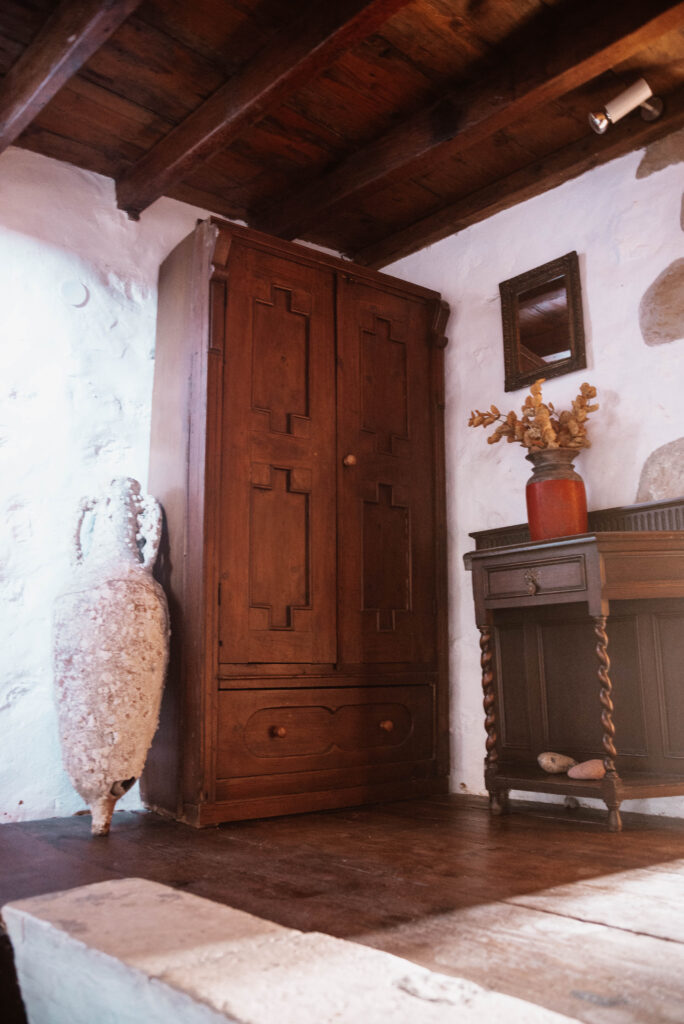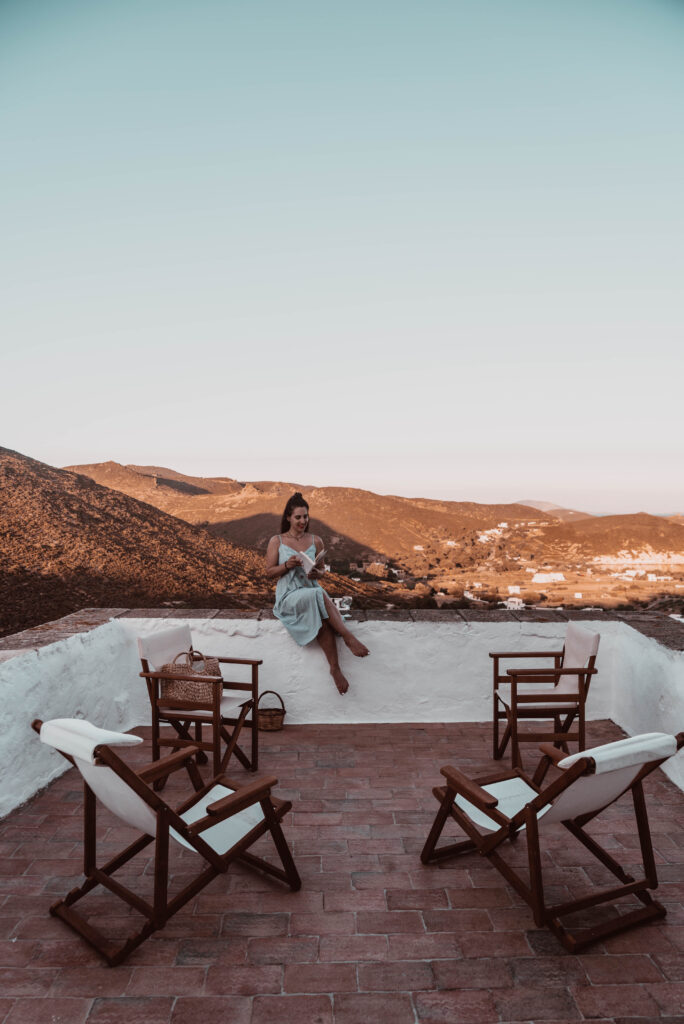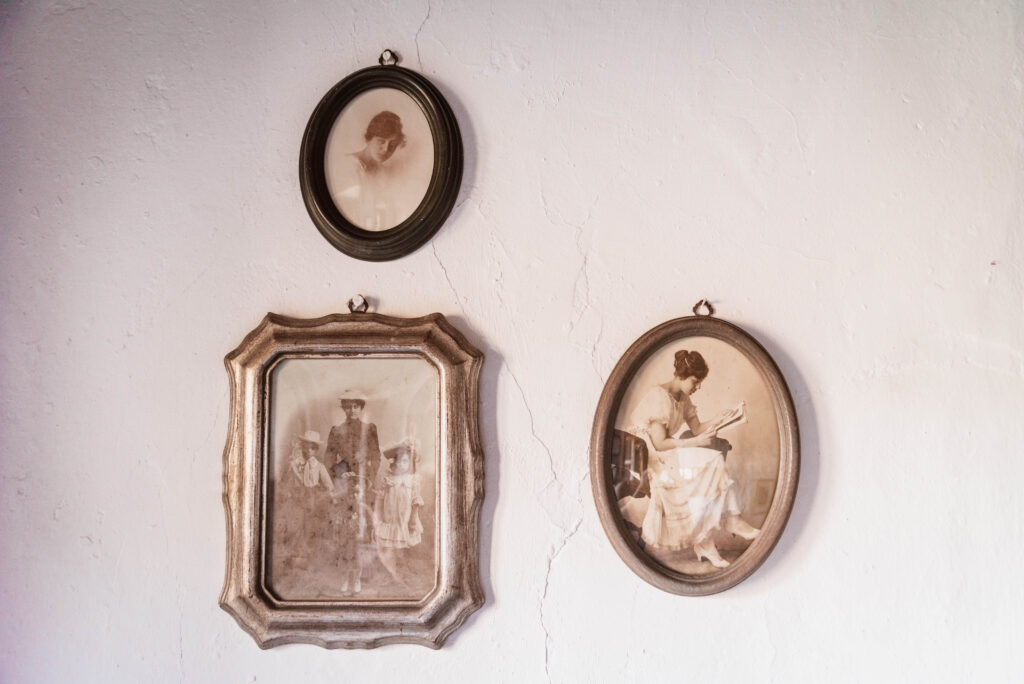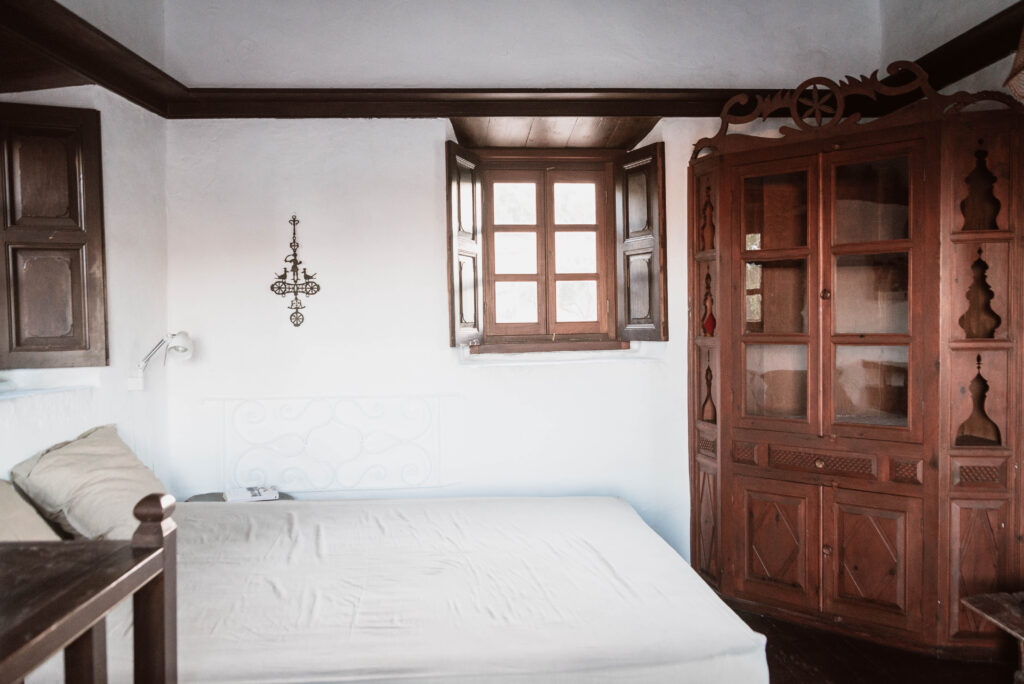We arrived on Patmos Island in mid-June. This was our first visit here and as we arrived late evening, the first thing we caught sight of was Skala, the largest settlement and the main port of Patmos. Nicoletta, our host was there to pick us up and lead us to Langada, her traditional farmhouse in upper Kampos.
After a few minutes of driving, we saw a lush green estate with a traditional farmhouse built around a small chapel and a central patio; developed during the centuries- in perfect harmony with nature and the ambiance of total tranquility- it overlooks Kampos beach. We immediately felt closer to nature, closer to God and an inner peace came over us.
We were curious about its history. Who built it, why, and when exactly? Nicoletta, a tourist guide herself, narrated the story for us.
“In 1971, my mother, Dolly Kontogianni, set foot at the port of Patmos island for the first time. It was love at first sight. She was immediately captivated by the island’s special energy. She soon found a plot in Chora, the island’s medieval capital, where she was planning to build a traditional island mansion. Dolly was a restless spirit and loved houses! She never stopped exploring the island’s homes and plots until she discovered the 40-acre estate ‘Langada’.
There she found a farmhouse in a ruinous condition; according to the chapel’s lintel, it was built in 1698. It is said that the chapel and the room next to it had been used by generations of monks from the holy St John monastery; they wished to lead an ascetic life and their aim was to cultivate the land. The estate belonged to 30 heirs. As you can imagine, the buying process was very complicated.
Dolly finally managed to acquire the property in 1973. She slowly started restoring the house, strictly following the traditional building techniques and architectural style. She was fully dedicated to this project which lasted five years. Since then, we have spent numerous summer and easter holidays here with friends and family,” says Nicoletta.
Today Langada is a large property divided into two parts (Langada 1 & Langada 2) by the central courtyard and the chapel. Guests can rent the entire property or choose only half of it.
We spent two nights at Langada 2, which offers two bedrooms, two bathrooms, a kitchenette, a sitting room, a beautiful courtyard, and a garden. The first bedroom is situated on the ground floor. It features a large traditional built-in double bed and an en suite bathroom. Exiting the bedroom, you will find a traditional sitting room that leads to the beautiful garden overlooking Kampos beach. The kitchenette and second bathroom are located at the back of the house. The kitchenette leads to a small courtyard with a dining table. The second bedroom, featuring a double bed, is on the upper floor and enjoys a large veranda with an unobstructed view of Kampos and the sea- we couldn’t get enough of this. The whole experience is as if we travelled back in time. It’s amazing to see how the houses were built back then.
Langada 1, consists of two bedrooms, two bathrooms, a spacious fully equipped kitchen, the central patio and chapel, and a front terrace. The master bedroom is a suite consisting of two parts, a sitting area with a sofa that converts into a double bed, and the sleeping room with a second double bed. The room also features an en suite bathroom with a shower. The second bedroom has a large traditional built-in bed and a sitting area. The spacious kitchen has a contemporary yet indigenous character and it used to be a traditional kitchen with wood stoves and a chimney. We had the chance to see the other home too and were able to see the wonderful renovations Nicoletta’s mother made to the entire property.
Apart from our veranda, outdoors we also enjoyed the beautiful and picturesque central patio, which features a large table and a built-in low sofa under the trees. The home’s indelible traditional architecture, the experience of the past, and the tranquility all formed an unbeatable, exclusive experience for us on Patmos island.
*All images by Polina Paraskevopoulou © (Copyright)

